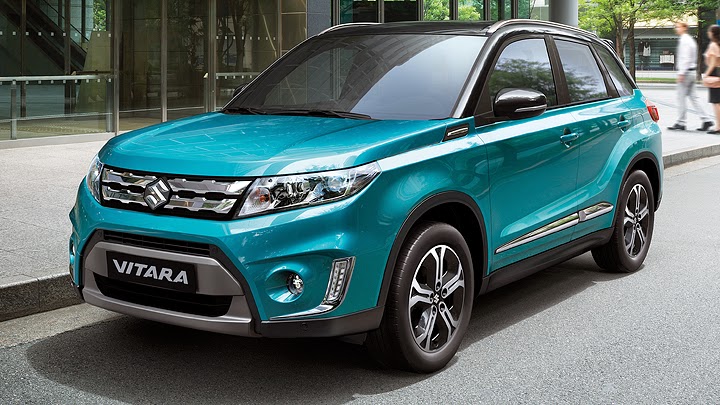
Like the license plates state, there is no “Grand” forename here. This means this vehicle is an attempt of presenting once again some of the values that built Vitara’s reputation back in the day, but combined to all the new tendencies of a two-decade older automotive market – global competition, ecological awareness, and technical efficiency are only some examples. On the other hand, since another of the aforementioned tendencies regarded having a dozen of other crossovers (at least) with which to compete, Suzuki couldn’t just use a modern reinterpretation of the original car. Vitara’s fourth generation (second if you exclude the Grand phase) tries to combine the spirit of yesterday with the qualities of today in order to attract the customers of tomorrow.
Vitara’s surprises start with the outside, but not in the way one would naturally expect. Even though it’s intended to be a strong-personality car, you can look from any angle and feel the same “It’s ok”. Those modern features are all there, such as curved elements to give a dynamic feeling, strong creases to play with light and shadow, two clearly separated boxes so as to remind of traditional SUVs, and irregularly-shaped lights intended to give a modern look. But the result just doesn’t say anything. You don’t get a clear message, like Chevrolet Trax’s visual strength, Ford EcoSport’s dynamism, Opel Mokka and Renault Captur’s lightness, or Dacia Duster and Jeep Renegade’s ruggedness. But, then again, sometimes people just want to go neutral.






If the overall appearance may look 2000-ish for some buyers, Vitara’s redemption comes at how is it offered: there are several personalization options, which include contrasting color for roof and pillars, black or white finishes for front grille and fender inserts, two options of clock, colored inserts for the interior and three new external colors: Atlantis Turquoise Pearl, Horizon Orange and Savannah Ivory. These are so important for Suzuki that they even have descriptions: the first “evokes the excitement and thrill of discovering natural beauty in highly urbanised cities”, while the second “evokes the excitement of encountering nature when leaving the city and heading for the suburbs”, and the third “evokes a boundless savannah field, which brings out an adventurous spirit”.
But there is much more to see. The cabin looks as simple and objective as the exterior, and as most Japanese cars’ cabin, but features the aforementioned colored parts (in orange, white, piano black or turquoise), and an equipment list which satisfies without surprising: infotainment central with 7” display, three-dimensional navigation system, multimedia audio system, smartphone connectivity, adaptive cruise control, seven airbags, an array of electronic passive-safety systems, and the two-piece sliding panoramic roof that debuted on the bigger brother SX4. Suzuki also announces the RBS system, which “monitors the road ahead by means of milliwave radar” in order to prevent or mitigate a collision through warning or automatic braking.






The new crossover will be equipped with the same engines as SX4, which are two 1.6L units. The one which burns petrol is good for 118 hp and 115 lb-ft, while the diesel unit combines the same power output to 236 lb-ft of torque. But Suzuki’s true focus is the efficiency: these engines emit respectively 123 and 106 g/km of CO2, which increase with the other powertrain options. The standard transmission is manual and has five speeds with the petrol engine and six with the other, but only the first can be upgraded for a six-speed automatic gearbox. The latter is claimed to have a wider gear ratio range, which is very useful when you have to drive at extreme revolutions – such as higher ones to pass a car or lower ones to drive on a highway, for example.
The other powertrain option is the brand new all-wheel-drive system. Vitara’s Allgrip is an evolution of the system fitted into SX4, and uses a feedback function to adapt the torque distribution to the ground’s demand, as well as to predict eventual wheelspin and do its best to prevent that. The driver can enjoy it in four modes: Auto (2WD as standard), Sport and Snow (4WD as standard, with different engine responses) and Lock (helped by a limited-slip differential). Everything paired to 16” or 17” wheels and a ground clearance that enables “the driver to easily negotiate deeply rutted or snow-covered roads”. After being officially released during this year’s Paris Auto Show, Vitara will go into production early 2015, which means it should go on sale some months later.